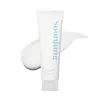What's inside
What's inside
 Key Ingredients
Key Ingredients

 Benefits
Benefits

 Concerns
Concerns

 Ingredients Side-by-side
Ingredients Side-by-side

Water
Skin ConditioningButylene Glycol
HumectantGlycerin
HumectantDimethicone
EmollientPentaerythrityl Tetraisostearate
EmollientHydrogenated Poly(C6-14 Olefin)
EmollientStearic Acid
CleansingBehenyl Alcohol
EmollientPalmitic Acid
EmollientCetyl Ethylhexanoate
Emollient1,2-Hexanediol
Skin ConditioningArachidyl Alcohol
EmollientC14-22 Alcohols
Emulsion StabilisingHydroxypropyl Bispalmitamide Mea
EmollientPolyacrylate-13
Arachidyl Glucoside
EmulsifyingMannitol
HumectantC12-20 Alkyl Glucoside
EmulsifyingPolyisobutene
Glyceryl Caprylate
EmollientPanax Ginseng Root Water
MaskingEthylhexylglycerin
Skin ConditioningAcrylates/Ammonium Methacrylate Copolymer
Polysorbate 20
EmulsifyingSorbitan Isostearate
EmulsifyingCarbomer
Emulsion StabilisingPerilla Ocymoides Seed Extract
AntioxidantMyristic Acid
CleansingArachidic Acid
CleansingCholesterol
EmollientBupleurum Falcatum Root Extract
Skin ConditioningAngelica Acutiloba Root Extract
Skin ConditioningOphiopogon Japonicus Root Extract
Skin ConditioningGlucose
HumectantSilica
AbrasiveGlycine Max Oil
EmollientCeramide NP
Skin ConditioningPhytosphingosine
Skin ConditioningHydrogenated Lecithin
EmulsifyingTocopherol
AntioxidantCanola Oil
EmollientRosmarinus Officinalis Leaf Extract
AntimicrobialWater, Butylene Glycol, Glycerin, Dimethicone, Pentaerythrityl Tetraisostearate, Hydrogenated Poly(C6-14 Olefin), Stearic Acid, Behenyl Alcohol, Palmitic Acid, Cetyl Ethylhexanoate, 1,2-Hexanediol, Arachidyl Alcohol, C14-22 Alcohols, Hydroxypropyl Bispalmitamide Mea, Polyacrylate-13, Arachidyl Glucoside, Mannitol, C12-20 Alkyl Glucoside, Polyisobutene, Glyceryl Caprylate, Panax Ginseng Root Water, Ethylhexylglycerin, Acrylates/Ammonium Methacrylate Copolymer, Polysorbate 20, Sorbitan Isostearate, Carbomer, Perilla Ocymoides Seed Extract, Myristic Acid, Arachidic Acid, Cholesterol, Bupleurum Falcatum Root Extract, Angelica Acutiloba Root Extract, Ophiopogon Japonicus Root Extract, Glucose, Silica, Glycine Max Oil, Ceramide NP, Phytosphingosine, Hydrogenated Lecithin, Tocopherol, Canola Oil, Rosmarinus Officinalis Leaf Extract
Water
Skin ConditioningGlycerin
HumectantPropanediol
SolventPentaerythrityl Tetraethylhexanoate
Emollient1,2-Hexanediol
Skin ConditioningSqualane
EmollientPanthenol
Skin ConditioningCetearyl Alcohol
EmollientBis-Diglyceryl Polyacyladipate-2
EmollientGlyceryl Stearate
EmollientPolyglyceryl-3 Methylglucose Distearate
EmulsifyingAmmonium Acryloyldimethyltaurate/Vp Copolymer
Hydrogenated Lecithin
EmulsifyingAcrylates/C10-30 Alkyl Acrylate Crosspolymer
Emulsion StabilisingXanthan Gum
EmulsifyingGlyceryl Caprylate
EmollientHydroxypropyl Starch Phosphate
Disodium EDTA
Ethylhexylglycerin
Skin ConditioningMadecassoside
AntioxidantTromethamine
BufferingButylene Glycol
HumectantTocopherol
AntioxidantCamellia Sinensis Leaf Extract
AntimicrobialWater, Glycerin, Propanediol, Pentaerythrityl Tetraethylhexanoate, 1,2-Hexanediol, Squalane, Panthenol, Cetearyl Alcohol, Bis-Diglyceryl Polyacyladipate-2, Glyceryl Stearate, Polyglyceryl-3 Methylglucose Distearate, Ammonium Acryloyldimethyltaurate/Vp Copolymer, Hydrogenated Lecithin, Acrylates/C10-30 Alkyl Acrylate Crosspolymer, Xanthan Gum, Glyceryl Caprylate, Hydroxypropyl Starch Phosphate, Disodium EDTA, Ethylhexylglycerin, Madecassoside, Tromethamine, Butylene Glycol, Tocopherol, Camellia Sinensis Leaf Extract
 Reviews
Reviews

Ingredients Explained
These ingredients are found in both products.
Ingredients higher up in an ingredient list are typically present in a larger amount.
1,2-Hexanediol is a synthetic liquid and another multi-functional powerhouse.
It is a:
- Humectant, drawing moisture into the skin
- Emollient, helping to soften skin
- Solvent, dispersing and stabilizing formulas
- Preservative booster, enhancing the antimicrobial activity of other preservatives
Butylene Glycol (or BG) is used within cosmetic products for a few different reasons:
Overall, Butylene Glycol is a safe and well-rounded ingredient that works well with other ingredients.
Though this ingredient works well with most skin types, some people with sensitive skin may experience a reaction such as allergic rashes, closed comedones, or itchiness.
Learn more about Butylene GlycolEthylhexylglycerin (we can't pronounce this either) is commonly used as a preservative and skin softener. It is derived from glyceryl.
You might see Ethylhexylglycerin often paired with other preservatives such as phenoxyethanol. Ethylhexylglycerin has been found to increase the effectiveness of these other preservatives.
Glycerin is already naturally found in your skin. It helps moisturize and protect your skin.
A study from 2016 found glycerin to be more effective as a humectant than AHAs and hyaluronic acid.
As a humectant, it helps the skin stay hydrated by pulling moisture to your skin. The low molecular weight of glycerin allows it to pull moisture into the deeper layers of your skin.
Hydrated skin improves your skin barrier; Your skin barrier helps protect against irritants and bacteria.
Glycerin has also been found to have antimicrobial and antiviral properties. Due to these properties, glycerin is often used in wound and burn treatments.
In cosmetics, glycerin is usually derived from plants such as soybean or palm. However, it can also be sourced from animals, such as tallow or animal fat.
This ingredient is organic, colorless, odorless, and non-toxic.
Glycerin is the name for this ingredient in American English. British English uses Glycerol/Glycerine.
Learn more about GlycerinGlyceryl Caprylate comes from glycerin and caprylic acid, a fatty acid from coconut. It has emollient and emulsifier properties.
As an emollient, it helps hydrate your skin. Emollients work by creating a barrier on your skin to trap moisture in, helping to keep your skin soft and smooth.
On the other hand, emulsifiers prevent ingredients (such as oil and water) from separating.
Learn more about Glyceryl CaprylateHydrogenated Lecithin is created from the hydrogenation of lecithin (a group of phospholipids). Hydrogenation is a chemical reaction between hydrogen and another element.
This ingredient is an emollient and emulsifier. As an emollient, it helps soften skin by trapping moisture within. As an emulsifier, it prevents oil and water ingredients from separating.
Tocopherol (also known as Vitamin E) is a common antioxidant used to help protect the skin from free-radicals and strengthen the skin barrier. It's also fat soluble - this means our skin is great at absorbing it.
Vitamin E also helps keep your natural skin lipids healthy. Your lipid skin barrier naturally consists of lipids, ceramides, and fatty acids. Vitamin E offers extra protection for your skin’s lipid barrier, keeping your skin healthy and nourished.
Another benefit is a bit of UV protection. Vitamin E helps reduce the damage caused by UVB rays. (It should not replace your sunscreen). Combining it with Vitamin C can decrease sunburned cells and hyperpigmentation after UV exposure.
You might have noticed Vitamin E + C often paired together. This is because it is great at stabilizing Vitamin C. Using the two together helps increase the effectiveness of both ingredients.
There are often claims that Vitamin E can reduce/prevent scarring, but these claims haven't been confirmed by scientific research.
Learn more about TocopherolWater. It's the most common cosmetic ingredient of all. You'll usually see it at the top of ingredient lists, meaning that it makes up the largest part of the product.
So why is it so popular? Water most often acts as a solvent - this means that it helps dissolve other ingredients into the formulation.
You'll also recognize water as that liquid we all need to stay alive. If you see this, drink a glass of water. Stay hydrated!
Learn more about Water